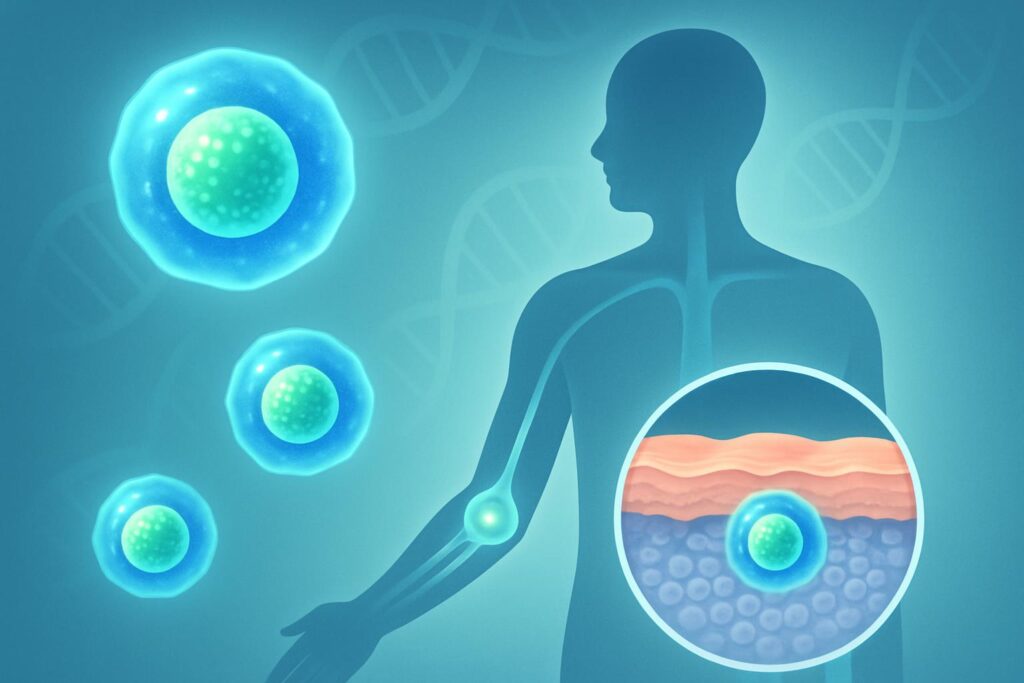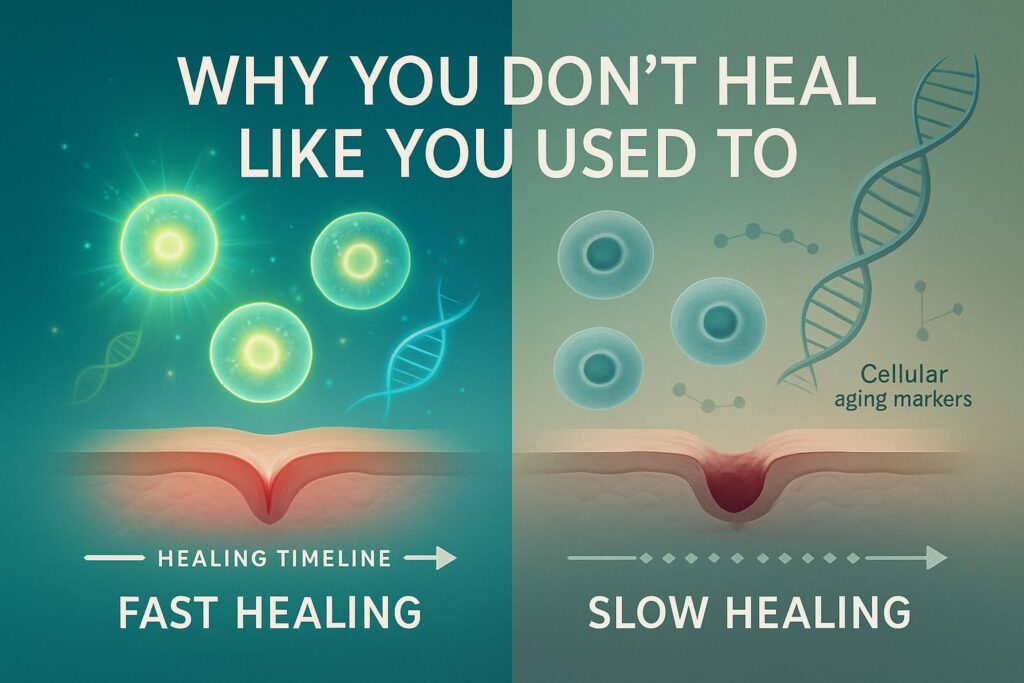Understanding Lymphoma and the Promise of Stem Cell Therapy
Lymphoma, a type of blood cancer that affects the lymphatic system, presents a significant health challenge worldwide. It’s a complex disease with various subtypes, each requiring a unique approach to treatment. In recent years, stem cell therapy has emerged as a beacon of hope for many lymphoma patients, offering new possibilities in the fight against this challenging disease.
In this article, we’ll delve into the world of stem cell-based therapies for lymphoma. We aim to provide a comprehensive understanding of how these therapies work, their benefits, and the challenges they face. Whether you’re a patient, a caregiver, or simply someone interested in the latest medical advancements, this article will guide you through the intricate landscape of stem cell therapy for lymphoma.
The Complexity of Lymphoma
Lymphoma is not a single disease but a group of blood cancers that develop in the lymphatic system. The two main types are Hodgkin lymphoma and non-Hodgkin lymphoma, each with its own characteristics and treatment approaches. Understanding these differences is crucial for developing effective treatment strategies.
The Role of Stem Cell Therapy
Stem cell therapy represents a groundbreaking approach in the treatment of various diseases, including lymphoma. Stem cells have the unique ability to develop into many different cell types, offering potential for regenerative therapies and cancer treatment. In the context of lymphoma, stem cell transplants have become a key component in the treatment arsenal, especially for patients who have not responded well to traditional therapies like chemotherapy.
The Journey Ahead
As we explore the role of stem cell-based therapies in treating lymphoma, we’ll discuss the types of stem cells used, the process of stem cell transplantation, and the latest advancements in the field. We’ll also look at the challenges and ethical considerations surrounding this innovative treatment. Our journey through this topic aims to shed light on how stem cell therapy is changing the landscape of lymphoma treatment and offering new hope to those affected by this disease.
In the following sections, we will dive deeper into each aspect of stem cell therapy for lymphoma, unraveling its complexities and highlighting its potential as a transformative treatment option. Stay tuned as we explore this exciting and rapidly evolving field of medicine.
Understanding Lymphoma
Types and Diagnosis of Lymphoma
Hodgkin and Non-Hodgkin Lymphoma
Lymphoma is broadly categorized into two types: Hodgkin lymphoma and non-Hodgkin lymphoma. Hodgkin lymphoma is marked by the presence of Reed-Sternberg cells, a type of abnormal cell, whereas non-Hodgkin lymphoma encompasses a diverse group of lymphomas that do not have these cells. Each type has different treatment approaches and prognosis.
Symptoms and Diagnosis
Common symptoms of lymphoma include swollen lymph nodes, fatigue, fever, and weight loss. However, these symptoms are not exclusive to lymphoma, making accurate diagnosis crucial. Diagnosis typically involves a biopsy of the lymph nodes, blood tests, and imaging studies like CT or PET scans.
Current Standard Treatments
The standard treatment for lymphoma often includes chemotherapy, radiation therapy, targeted therapy, or a combination of these. The choice of treatment depends on the type and stage of lymphoma, as well as the patient’s overall health.
Challenges in Treating Lymphoma
Treating lymphoma can be challenging, especially in cases where it becomes resistant to standard treatments or relapses after initial therapy. This is where advanced treatments like stem cell therapy come into play, offering new hope for patients with refractory or relapsed lymphoma.
Lymphoma, with its various subtypes and complex nature, requires a nuanced approach to treatment. In the next section, we’ll delve into the world of stem cells, laying the groundwork to understand how stem cell therapy is revolutionizing the treatment of lymphoma.
Stem Cells: A Primer
The Building Blocks of Regenerative Medicine
What are Stem Cells?
Stem cells are the body’s raw materials, cells from which all other cells with specialized functions are generated. They have the unique ability to develop into many different cell types in the body, from muscle cells to brain cells. This remarkable trait makes them invaluable in medical research and treatment.
Types of Stem Cells
There are primarily three types of stem cells:
- Embryonic Stem Cells: Derived from embryos, these pluripotent stem cells can turn into more than 200 cell types in the human body.
- Adult Stem Cells: Found in adult tissues like the bone marrow or fat, these are more limited in their ability to differentiate.
- Induced Pluripotent Stem Cells: These are adult cells that have been genetically reprogrammed to an embryonic stem cell-like state.
Each type has unique properties and potential uses in medicine, particularly in the treatment of diseases like lymphoma.
Role in Regenerative Medicine
Stem cells are at the forefront of regenerative medicine, a revolutionary field that aims to repair or replace damaged cells, tissues, and organs. They offer the potential for a renewable source of replacement cells to treat diseases, including cancer, heart disease, and neurological disorders.
Understanding stem cells is crucial to appreciating their role in treating diseases like lymphoma. In the next section, we will explore how these cells are being used specifically in stem cell therapies for lymphoma, marking a significant advancement in the field of oncology.
Stem Cell Therapies in Lymphoma Treatment
Harnessing the Power of Stem Cells Against Cancer
Historical Perspective
The use of stem cell therapy in treating lymphoma has evolved significantly over the years. Initially, bone marrow transplants were the primary method of stem cell transplant. However, advancements in medical science have led to more sophisticated and effective methods, including the use of peripheral blood stem cells.
Autologous vs. Allogeneic Stem Cell Transplants
In the realm of lymphoma treatment, there are two main types of stem cell transplants:
- Autologous Stem Cell Transplant: This involves using the patient’s own stem cells. The process includes harvesting stem cells before treatment like high-dose chemotherapy, then re-infusing them back into the patient to rebuild the damaged bone marrow.
- Allogeneic Stem Cell Transplant: This type uses stem cells from a donor. The donor’s immune cells may help to destroy any remaining cancer cells, a phenomenon known as the ‘graft-versus-lymphoma’ effect.
Each type has its advantages and risks, and the choice depends on various factors including the patient’s condition and the type of lymphoma.
The Process of Stem Cell Transplantation
The process of stem cell transplantation in lymphoma treatment typically involves several steps:
- Preparation: This includes chemotherapy and sometimes radiation therapy to destroy cancer cells and suppress the immune system.
- Transplantation: Infusion of stem cells into the patient’s bloodstream.
- Post-Transplant Care: Monitoring for complications and ensuring the new stem cells begin producing healthy blood cells.
Advantages of Stem Cell Therapy
Stem cell therapy in lymphoma offers several advantages:
- It allows for higher doses of chemotherapy, as the infused stem cells can help recover the bone marrow.
- It can provide a new immune system to help fight lymphoma cells.
- For some patients, it offers a chance of long-term remission or even cure.
Stem cell therapy has become a cornerstone in the treatment of refractory or relapsed lymphoma, offering new hope where traditional therapies have failed. In the next section, we will delve into the ongoing clinical trials and research that are further shaping the future of stem cell-based therapies in lymphoma treatment.
Clinical Trials and Research
Pioneering the Future of Lymphoma Treatment
Overview of Ongoing Clinical Trials
Clinical trials play a pivotal role in advancing lymphoma treatment. These trials test new treatments, combinations of therapies, and explore new ways to use existing treatments. They are essential for understanding the effectiveness and safety of new approaches, including stem cell therapies.
Breakthroughs and Key Findings
Recent years have seen significant breakthroughs in stem cell research for lymphoma. For instance, the development of CAR T-cell therapy – a type of treatment where a patient’s T-cells are modified in a lab to attack cancer cells – has been a major advancement. This therapy has shown promising results, particularly in treating certain types of aggressive lymphomas.
Case Studies and Success Stories
There are numerous success stories where patients with advanced lymphoma have achieved remission following stem cell therapy. These cases not only highlight the potential of stem cell treatments but also provide valuable insights for future research and clinical applications.
The landscape of lymphoma treatment is rapidly evolving, with stem cell-based therapies at the forefront. As we continue to witness advancements and success stories, the hope for more effective and personalized treatments for lymphoma patients grows stronger. In the next section, we will explore the challenges and limitations of stem cell therapy, providing a balanced view of this innovative treatment approach.
Challenges and Limitations
Navigating the Complexities of Stem Cell Therapy
Risks and Complications of Stem Cell Therapy
While stem cell therapy offers significant benefits, it’s not without risks. Complications can arise from the procedure itself or from the high-dose chemotherapy often used in conjunction. These risks include infection, graft-versus-host disease (in allogeneic transplants), and the possibility of the stem cells not engrafting properly.
Ethical and Regulatory Considerations
Stem cell research, particularly involving embryonic stem cells, raises ethical questions. The debate centers around the moral implications of using human embryos in research. Additionally, regulatory hurdles can impact the development and approval of new therapies, affecting how quickly they can be made available to patients.
Accessibility and Cost Issues
The cost of stem cell therapy can be prohibitive, limiting access for many patients. Insurance coverage varies, and the overall expense includes not just the treatment but also the associated long-term care and monitoring. Furthermore, the availability of these therapies is often limited to specialized centers, which may not be accessible to all patients.
Despite these challenges, the potential of stem cell therapy in treating lymphoma remains immense. As research continues and new protocols are developed, it is hoped that these therapies will become more accessible and affordable. In the next section, we will look towards the future, exploring emerging trends and innovations in stem cell therapy for lymphoma.
The Future of Stem Cell Therapy in Lymphoma Treatment
Emerging Trends and Innovations
A. Emerging Trends and Innovations
The future of stem cell therapy in lymphoma treatment is bright, with ongoing research paving the way for more effective and safer treatments. Innovations such as gene editing, improved methods for stem cell harvesting and transplantation, and the development of new immunotherapy techniques are at the forefront of this evolution.
B. The Role of Personalized Medicine
Personalized medicine is becoming increasingly important in the realm of stem cell therapy. By tailoring treatment to the individual characteristics of each patient’s lymphoma, healthcare providers can improve the effectiveness of treatment while minimizing side effects. This approach is particularly promising in the context of CAR T-cell therapy and other forms of immunotherapy.
C. Collaborations and Global Efforts in Research
The fight against lymphoma is a global effort, with researchers, clinicians, and organizations around the world collaborating to advance the field of stem cell therapy. These collaborations are crucial for sharing knowledge, resources, and best practices, ultimately accelerating the development of new treatments.
As we look to the future, the potential of stem cell therapy in transforming the treatment of lymphoma is undeniable. With continued research, collaboration, and innovation, there is hope for more effective, personalized, and accessible treatments for lymphoma patients worldwide.
Conclusion
Summarizing the Journey of Stem Cell Therapy in Lymphoma
Summary of Key Points
In this article, we’ve explored the complex world of lymphoma and the groundbreaking role of stem cell therapy in its treatment. From understanding the basics of stem cells to examining the latest clinical trials and innovations, we’ve seen how this therapy offers new hope for patients battling lymphoma.
The Potential Impact of Stem Cell Therapies
The impact of stem cell therapies on lymphoma treatment is profound. They offer the possibility of long-term remission and even cure for some patients, particularly those for whom traditional treatments have failed.
Final Thoughts and Encouragement for Ongoing Education and Research
As we continue to witness advancements in stem cell therapy, it’s crucial for patients, healthcare providers, and researchers to stay informed and engaged. Ongoing education and research are key to unlocking the full potential of these therapies in the fight against lymphoma.
We hope this article has provided valuable insights into the role of stem cell therapy in lymphoma treatment. As the field continues to evolve, we remain optimistic about the future and the promise it holds for those affected by this challenging disease.
References
For further reading and detailed information, we recommend exploring resources from reputable organizations and publications. Here are some resources that offer in-depth knowledge and the latest findings in the field of lymphoma and stem cell therapy:
- National Cancer Institute – Lymphoma: This link provides comprehensive information on lymphoma, including types, treatment options, and ongoing research, directly from the National Cancer Institute.
- American Society of Clinical Oncology – Lymphoma Resources: The American Society of Clinical Oncology offers a range of resources on lymphoma, including treatment guidelines and patient education materials.
- Blood Cancer Journal – Stem Cell Therapy in Lymphoma: The Blood Cancer Journal, a part of Nature Publishing Group, provides access to peer-reviewed articles and latest research findings on blood cancers, including lymphoma and stem cell therapy advancements.



